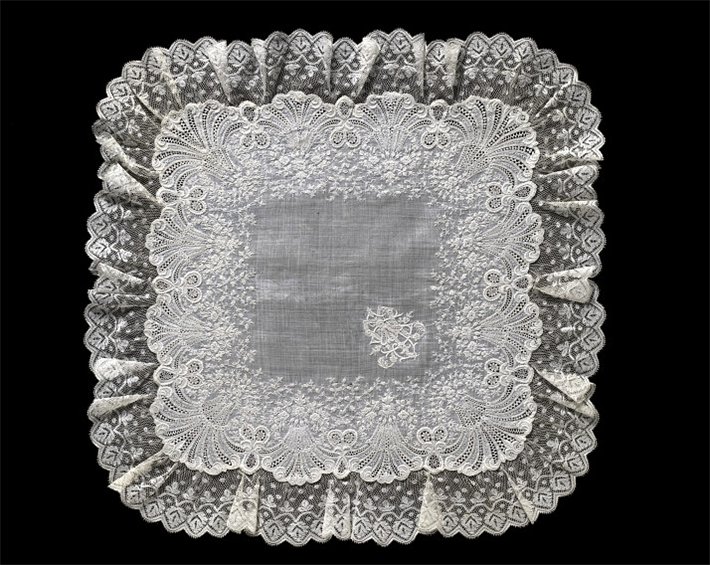A handkerchief is a modest but very necessary accessory, with a centuries-old history. From its inception to our time, it has been used both for its intended purpose and for completely different, sometimes unexpected purposes. So, ladies used it as a short message to gentlemen, with its help they welcomed actors to the theater, preserved the memory of the owner, etc. But not everyone knows that the scarf was not always square...

What were the first handkerchiefs?
In literature, mention of the accessory that is familiar to us as a means of personal hygiene is found back in the 3rd century! They were different from today in many ways.
Material
The very first of them began to be produced in Assyria from the thinnest parchment. In China, the first products were also paper - based rice paper.
Reference. Fabric handkerchiefs are also quite old. They began to be made in Byzantium back in the 8th century.
Purpose

Accessories were used in different ways back then. Spectators waved them from the stands during performances, also with the help of it people expressed their will or protest.
Important! At the Byzantine court, only ladies of royal blood could wear headscarves, since this accessory was considered a symbol of honor and nobility. They were usually attached to the left shoulder or elbow.
In the Middle Ages they decorated the knight's spear. The ladies attached them, blessing their beloved for victory. Even then, products were decorated with embroidery or fringe.
But the heyday of fashion for handkerchiefs begins in the Renaissance. During this period, the accessory included in the bride's dowry list. Ladies often held it in their hands to attract the attention of gentlemen. Such products were a real luxury; only wealthy ladies could afford them..
Why does a medieval lady need 2 scarves at once?
At the French court in the 16th century, these napkins were used to wipe away tears and also for blowing the nose. We sewed several options at once - beautiful and more modest.
The first version was richly decorated with lace and embroidery. The second option was an ordinary piece of fabric, used for its intended purpose and not displayed.
At one time it was customary to use this product at court when washing hands. The fingertips were wiped with a damp cloth.
Later, the accessory quickly came into fashion as decorative addition to a costume, adding zest and emphasizing the status of the owner.
How a handkerchief became square
We have already said that accessories began to be used a very long time ago. Their form would surprise us today.
Initial form

If the sizes of the first handkerchiefs were approximately equivalent to modern ones, then their shape could be different: round, triangular, rectangular. Square ones were also found, but much less frequently.
Reference. Regardless of the shape, the fabric was richly decorated with lace and embroidery.
What caused the changes
Why did this accessory become square? This happened in the 18th century by order of King Louis XIV.
Reference. The complaint prompted a change in form. Court tailors began to complain about the wasteful consumption of fabric when cutting round and triangular scarves.
Remaining the scraps were no longer suitable for sewingbecause they were too small.
The king, without thinking twice, issued decree that the length of a napkin should be equal to its width. This order applied to the entire kingdom. And then this form became familiar and relevant for neighboring countries. Since then, the small square accessory has not changed.

Modern handkerchiefs
Nowadays, a cloth napkin is used less often, because there is a more practical alternative made of paper.
However, disposable napkins have not been able to completely displace traditional fabric products from our everyday life. Modern products are made from cambric, cotton, chintz, and special tartan.

While maintaining a square shape, they have a smooth or embroidered figured edge. On sale you can find products with various funny inscriptions that lift your spirits. Or children's scarves with funny designs. And people of the older generation (usually men) still use classic checkered handkerchiefs.
No one thinks of changing the shape of an accessory anymore!


 0
0





